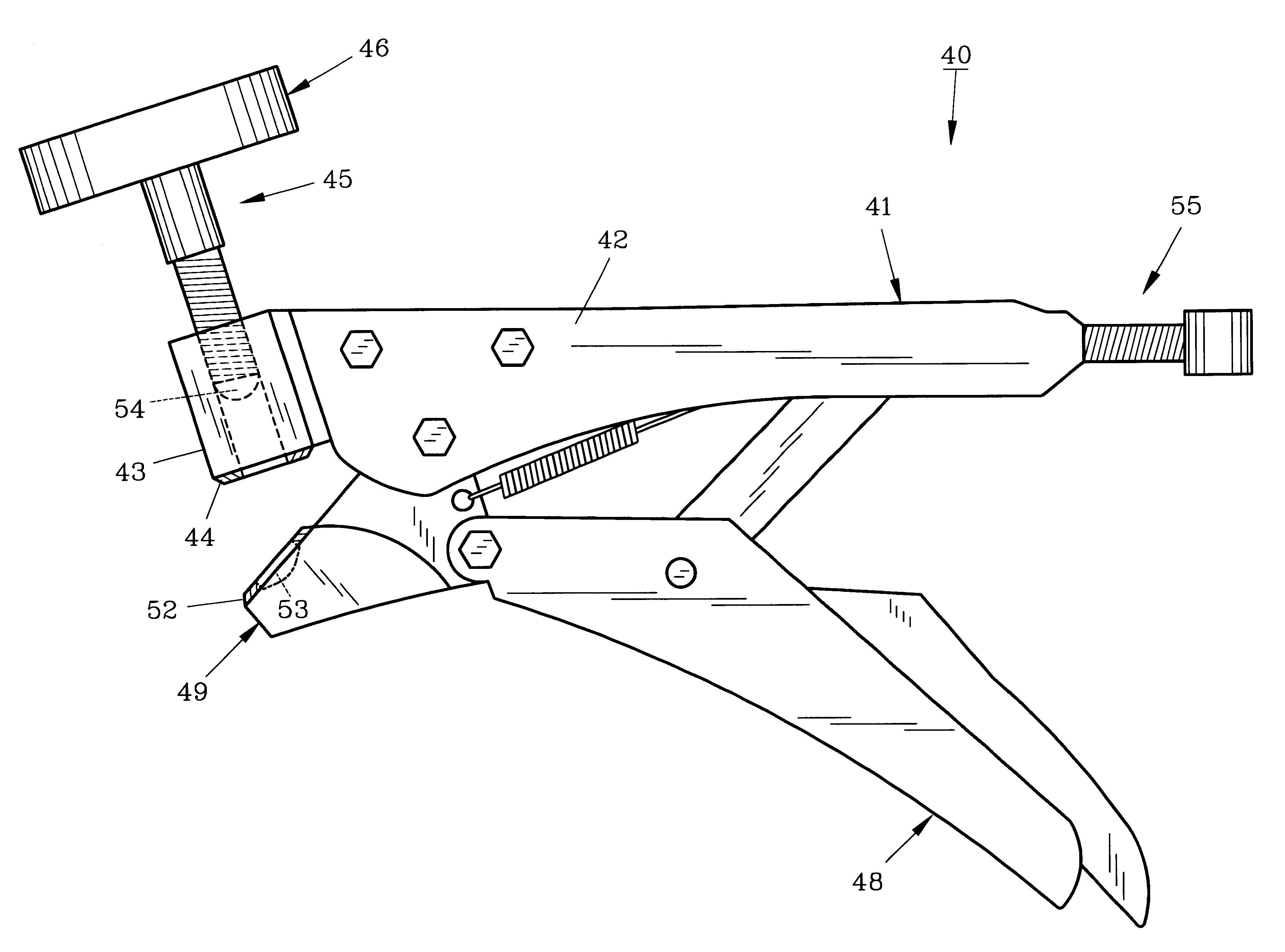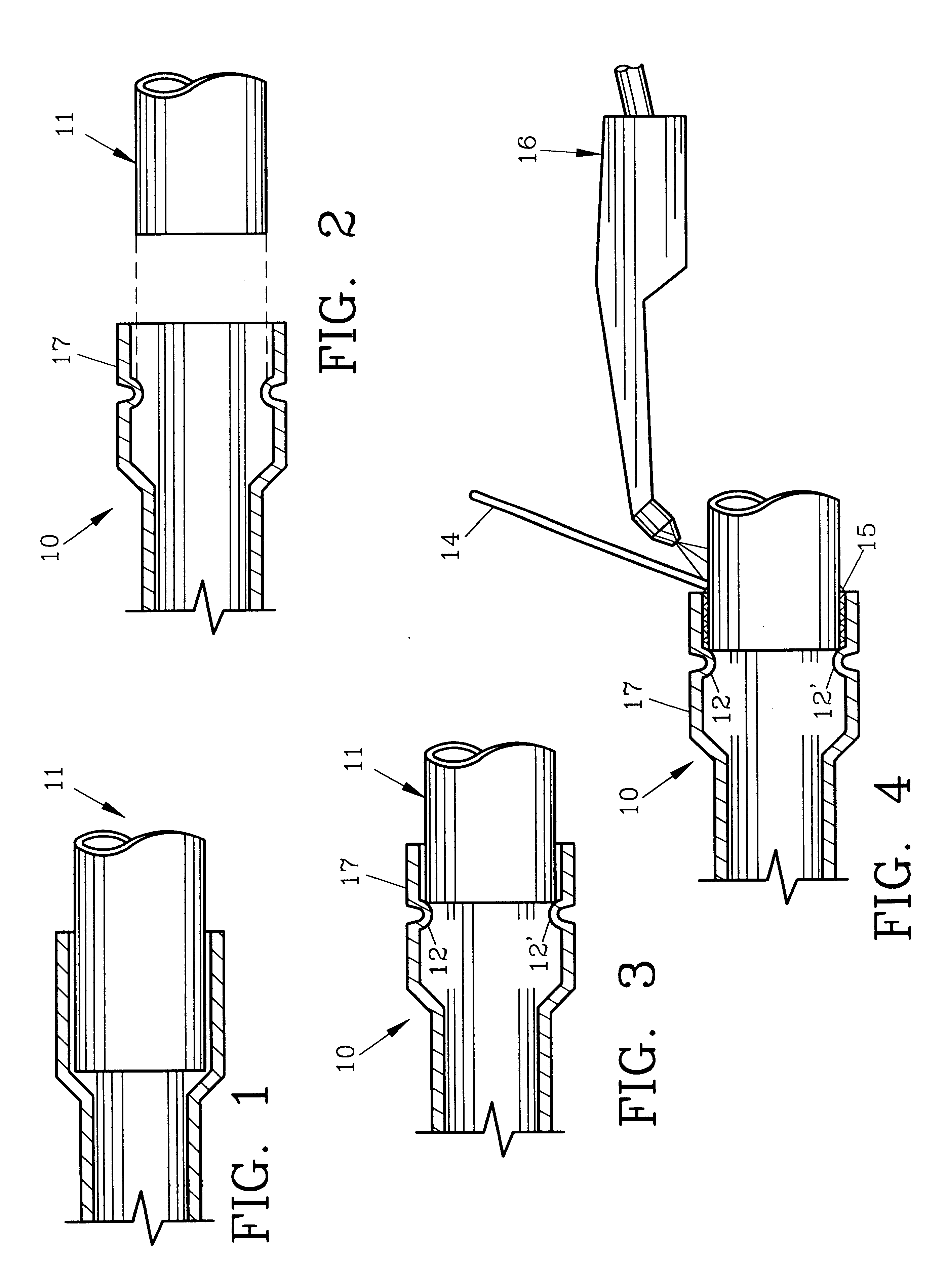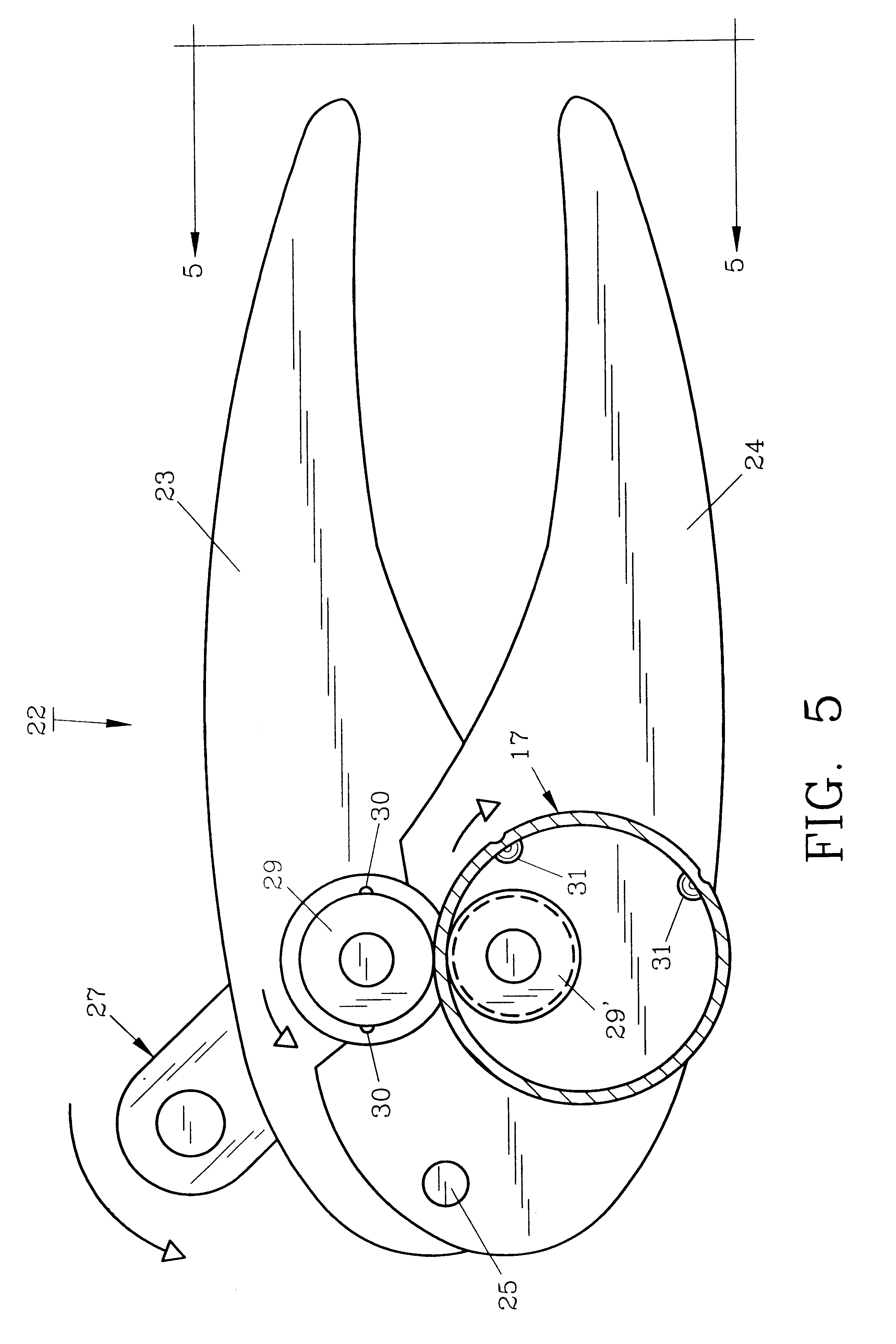Tubular fitting, tool and method
- Summary
- Abstract
- Description
- Claims
- Application Information
AI Technical Summary
Benefits of technology
Problems solved by technology
Method used
Image
Examples
Embodiment Construction
For a better understanding of the invention and its operation, turning now to the drawings, FIG. 2 shows a partial view of a preferred reconditioned socket fitting of the invention in cross-sectional view prior to insertion of tubular member 11 which may be for example, a copper pipe which is dimensioned for reception by socket 17. As seen in FIG. 3, tubular member 11 has been inserted into socket 17 and abuts ridges 12, 12' formed therein. Ridges 12, 12' preferably are dimples pressed into socket 17 as will be hereinafter described in more detail.
Once tubular member 11 has been fully inserted into socket 17 which as shown in FIGS. 3 and 4 is about one-half of the normal socket length, metal adherent 15 such as a conventional brazing metal composition is applied as usual between tubular member 11 and the inner walls of socket 17 to rigidly connect tubular member 11 and socket fitting 10 (FIG. 4). Heat to melt and flow adherent 15 is supplied utilizing a conventional brazing rod 14 a...
PUM
| Property | Measurement | Unit |
|---|---|---|
| Fraction | aaaaa | aaaaa |
| Fraction | aaaaa | aaaaa |
| Fraction | aaaaa | aaaaa |
Abstract
Description
Claims
Application Information
 Login to View More
Login to View More - R&D
- Intellectual Property
- Life Sciences
- Materials
- Tech Scout
- Unparalleled Data Quality
- Higher Quality Content
- 60% Fewer Hallucinations
Browse by: Latest US Patents, China's latest patents, Technical Efficacy Thesaurus, Application Domain, Technology Topic, Popular Technical Reports.
© 2025 PatSnap. All rights reserved.Legal|Privacy policy|Modern Slavery Act Transparency Statement|Sitemap|About US| Contact US: help@patsnap.com



